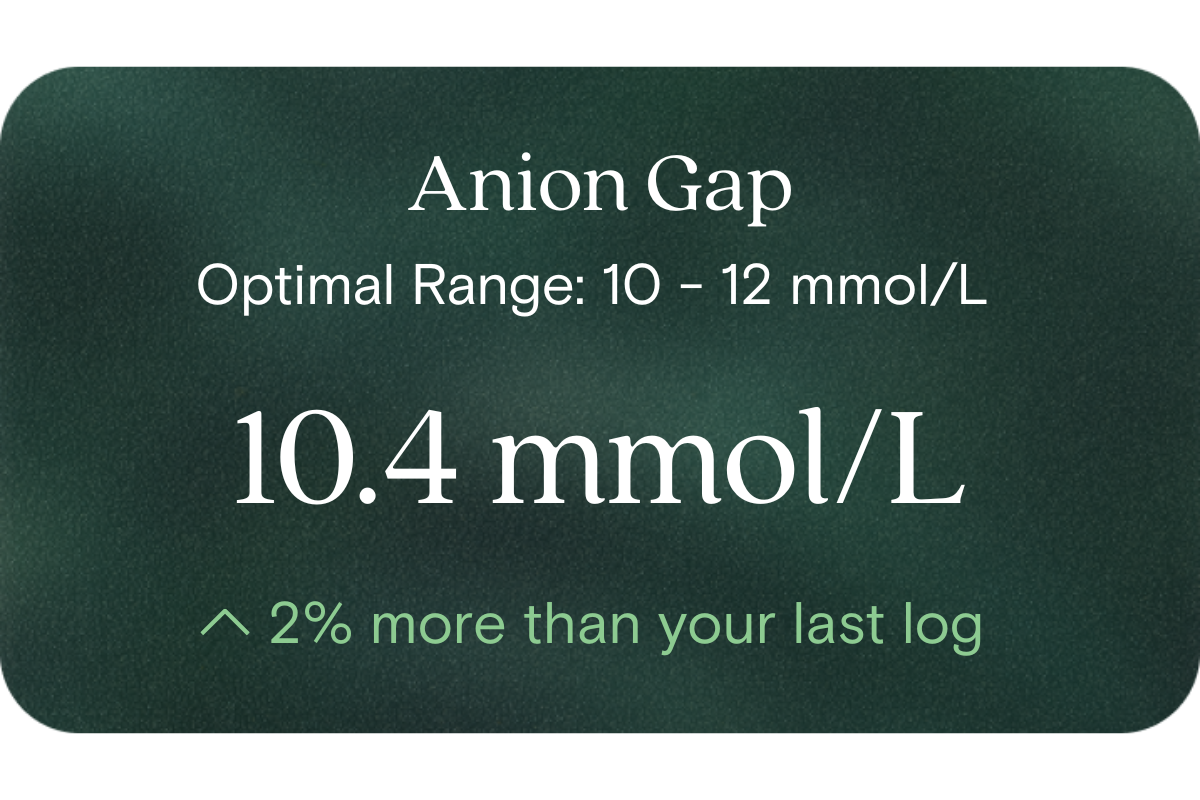What is the Anion Gap?
The Anion Gap is a calculated marker from your blood test results, showing the difference between your main positive and negative electrolytes:
Anion Gap = (Na + K) – (Cl + HCO₃)
All values are measured in mmol/L.
Why does it matter for long-term health and wellbeing?
It reflects how well your body maintains acid–base balance — a process vital for metabolism, enzyme activity, and cellular energy. Monitoring it helps you identify changes early and optimise lifestyle factors for better health.
What’s an optimal level of Anion Gap?
- Lab (reference) range: 8–16 mmol/L
- Optimal range: 10–12 mmol/L
What influences Anion Gap levels?
Hydration, electrolyte intake, albumin levels, medications, exercise intensity, and nutrition can all affect the reading.
What does it mean if Anion Gap is outside the optimal range?
A slightly higher or lower value can indicate your body is adapting to changes in hydration, electrolyte balance, or nutrient status. It’s a sign to review lifestyle factors rather than a cause for concern.
How can I support healthy Anion Gap levels?
Stay well-hydrated, eat a balanced diet with fruits and vegetables, manage stress, recover adequately after exercise, and review electrolyte intake when needed.
This information is provided for general health and wellness purposes only and does not replace medical advice.
References
- Royal College of Pathologists of Australasia. Anion gap — Reference Interval and Methodology.
- SydPath. Chloride and the Anion Gap Information Sheet (2022).
- StatPearls. Anion Gap (DG Pandey et al.).
- PathologyTestsExplained. Electrolytes — Anion Gap




















.png)
